Related Research Articles
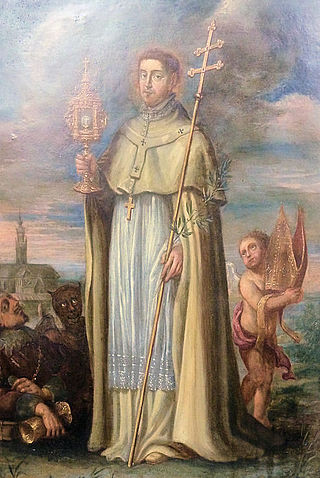
Norbert of Xanten, O. Praem (Xanten-Magdeburg), also known as Norbert Gennep, was a bishop of the Catholic Church, founder of the Premonstratensian order of canons regular, and is venerated as a saint. Norbert was canonized by Pope Gregory XIII in the year 1582, and his statue appears above the Piazza colonnade of St. Peter's Square in Rome.

The Order of Canons Regular of Prémontré, also known as the Premonstratensians, the Norbertines and, in Britain and Ireland, as the White Canons, is a religious order of canons regular of the Catholic Church founded in Prémontré near Laon in 1120 by Norbert of Xanten, who later became Archbishop of Magdeburg. Premonstratensians are designated by OPraem following their name.

Welford is a village and civil parish in England, on the River Avon border between Northamptonshire and Leicestershire. At the 2011 census, the population was 1,043.
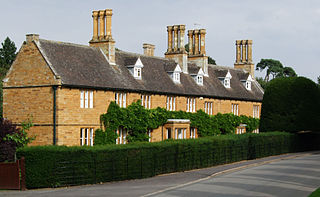
Cottesbrooke is a village and civil parish in West Northamptonshire in England. At the time of the 2001 census, the parish's population was 144 people, falling marginally to 143 at the 2011 census.

Titchfield Abbey is a medieval abbey and later country house, located in the village of Titchfield near Fareham in Hampshire, England. The abbey was founded in 1222 for Premonstratensian canons, an austere order of priests. The abbey was a minor house of its order, and became neither wealthy nor influential during its three centuries of monastic life; the inhabitants were devoted to scholarship, as shown by their very impressive library.

Halesowen Abbey was a Premonstratensian abbey in Halesowen, England of which only ruins remain. Founded by Peter des Roches with a grant of land from King John, the abbey's official year of inauguration was 1218. It acquired two daughter abbeys and a dependent priory. It also acquired a considerable range of estates, mostly concentrated within the region, and a number of churches, which it appropriated after being granted the advowsons. The abbey's manorial court records have survived in large part, portraying a discontented community, driven to many acts of resistance and at one point to challenge the abbey's very existence. The abbey played no great part in the affairs of its order, although it was represented at all levels. At least one abbot attracted serious criticism from within the order, which attempted to remove him. Its canons observed the Rule of St Augustine to a varying degree, with some serious lapses, at least in the late 15th century, when the order's visitor uncovered widespread sexual exploitation of local women. The abbey was moderately prosperous and survived the suppression of the lesser monasteries. It was dissolved in 1538.

Beeleigh Abbey near Maldon in Essex, England, was a monastery constructed in 1180 for the Order of Canons Regular of Prémontré, as known as the Norbertines or Premonstratensians. The order linked the change of the separate life of monks in the 12th century with the retrospective life of the friar, who was considerably more active.
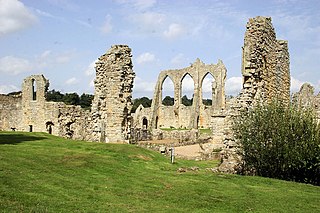
Bayham Old Abbey is an English Heritage property, located near Lamberhurst, Kent, England. Founded c. 1208 through a combination of the failing Premonstratensian monasteries of Otham and Brockley, Bayham functioned as an abbey until its dissolution in the 16th century. The ruins were partially modified in the late 18th century, to provide a better landscape feature during landscaping of the new Bayham Abbey mansion park, and were donated to the state in 1961.
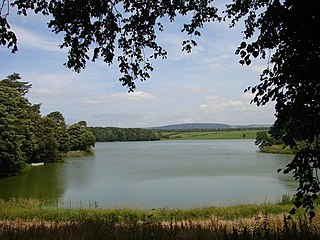
Saulseat or Soulseat Abbey was a Premonstratensian monastic community located in Wigtownshire, Galloway, in the Gaelic-speaking south-west of Scotland.

Croxton Abbey, near Croxton Kerrial, Leicestershire, was a Premonstratensian monastery founded by William I, Count of Boulogne.

Tupholme Abbey was a Premonstratensian abbey close to the River Witham some 10+1⁄2 miles (16.9 km) east of the city of Lincoln, England. The Witham valley in Lincolnshire is notable for its high concentration of monasteries—there were six on the east bank and three on the west—all presumably drawn to the area by the usefulness of the River Witham for transport and by the wealth that it transported. The abbey was largely destroyed by 1538, after being seized during Henry VIII's Dissolution of the Monasteries.
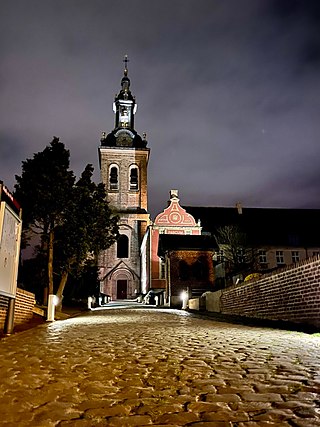
Park Abbey is a Premonstratensian abbey in Belgium, at Heverlee just south of Leuven, in Flemish Brabant.

Frigolet Abbey — The Pontifical Shrine of Our Lady of Good Remedy and Saint Joseph is a grand Premonstratensian monastery complex in southern France. It is located in the territorial commune of Tarascon, in the region of the Montagnette, the parishes of which are served by the canons of the monastery. It was originally associated with the Order of Saint Benedict.
St. Philip's Priory situated on New London Road in Chelmsford, Essex, UK was a Premonstratensian priory of canons regular. It was dedicated to Our Lady Queen of Sorrows and St. Philip Benizi. In the summer of 2022, the canonry relocated to London, founding the Priory of Our Lady of Sorrows, Peckham, in the Archdiocese of Southwark. St Philip's returned to the care of the Diocese of Brentwood.
Lavendon Abbey was a Premonstratensian abbey near Lavendon in Buckinghamshire, England.
Newbo Abbey was a Premonstratensian house of canons regular in Lincolnshire, England, dedicated to the Assumption of Mary.

Newsham Abbey was an abbey in Newsham, a small hamlet north of Brocklesby village in Lincolnshire, England. Founded by Peter of Gousla in 1143, Newsham was a daughter house of the Abbey of Licques, near Calais, and the first Premonstratensian house established in England.
Wendling Abbey was monastic house in Norfolk, England. The Abbey once stood on marshy ground near a small rivulet which runs to the south. The abbey and outbuildings covered approximately two acres of ground, it stood on ten acres of land and was founded by one of Henry III judges called William de Wendling in the year 1267.
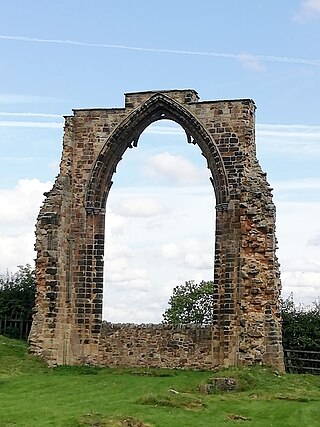
Dale Abbey, also known as the Abbey of Stanley Park, was a religious house, close to Ilkeston in Derbyshire. Its ruins are located at the village of Dale Abbey, which is named after it. Its foundation legend portrays it as developing from a hermitage, probably in the early 12th century. After several false starts, it was finally constituted as an abbey in 1204. It was affiliated to the Premonstratensians, an order of canons regular in which it played, at times, a leading part among English Houses. It acquired a large number of small properties, concentrated in areas of the East Midlands, developed a network of granges and appropriated a number of lucrative parish churches. Its discipline and reputation varied considerably, particularly in the 15th century, and it seems to have fallen away from the originally austerity. By 1536 its income was well below the threshold set for the Dissolution of Lesser Monasteries. Although there were accusations of grave immorality, the abbey was allowed to pay a fine to continue its existence until 1538.
References
- 1 2 3 "House of Premonstratensian canons: The abbey of Sulby", A History of the County of Northampton, Volume 2. (R M Serjeantson, and W R D Adkins, eds.) London: Victoria County History, 1906. 138-142. British History Online
 This article incorporates text from this source, which is in the public domain .
This article incorporates text from this source, which is in the public domain . - 1 2 "Sulby Abbey", History, gazetteer, and directory of Northamptonshire, William Whellan and co, 1849, p. 961
- 1 2 3 "The Abbey of Sulby", The Victoria History of the County of Northampton, Vol. 2, (William Ryland Dent Adkins, ed.), Constable, 1906, p. 138
 This article incorporates text from this source, which is in the public domain .
This article incorporates text from this source, which is in the public domain . - ↑ Curtis, John. A Topographical History of the County of Leicester, W. Hextall, 1831, p. 22
- ↑ "Sulby Abbey", Pastscape
